We’re sipping frothy cappuccino in a café on a charming cobbled street while I run a crash course on the small town we’ve just arrived in. It’s a little over an hour since we decided to day trip here from our base in Bologna.
Me: ‘Did you know Ravenna was the capital of the Western Roman Empire back in 402AD?’
John: ‘I didn’t know Ravenna existed until this morning.’
Me: ‘Did you know that it was also the capital of the Kingdom of the Ostrogoths? Then the centre of the Byzantine power in Italy, and then the seat of the Lombard Kingdom?’
John: ‘I need more coffee.’
Such a power CV is hard to imagine when you first arrive in Ravenna (and impossible without an appropriate dose of caffeine apparently). The city today is a pleasant, if otherwise typical Italian town, with cobbled streets, wide piazzas and some seriously old buildings.

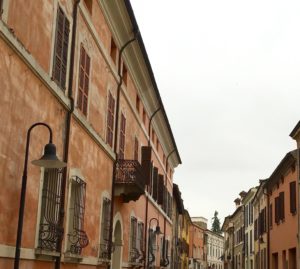
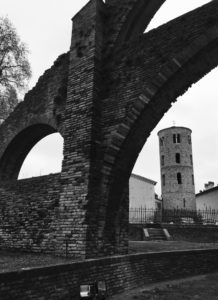
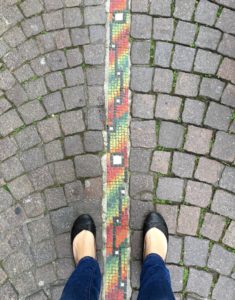
But it’s also home to no less than eight UNESCO World Heritage sites: a group of churches and baptisteries inscribed on the list for their extraordinary collections of exquisite early Christian mosaics. These masterworks of stone, glass and other glittering stuffs blaze in technicolour just as brightly now (largely thanks to careful restoration) as they did when they were created some 1,500 years ago.
We’re given a map with our combo ticket that provides a suggested walking tour of Ravenna taking in the various mosaic sites dotted around town. It starts with the grandest of the group, the Basilica di San Vitale, and works a winding path through another four monuments. Starting big is deliberate; some argue there’s a very real risk of ‘art attack’ in the overwhelming presence of so much creative beauty.
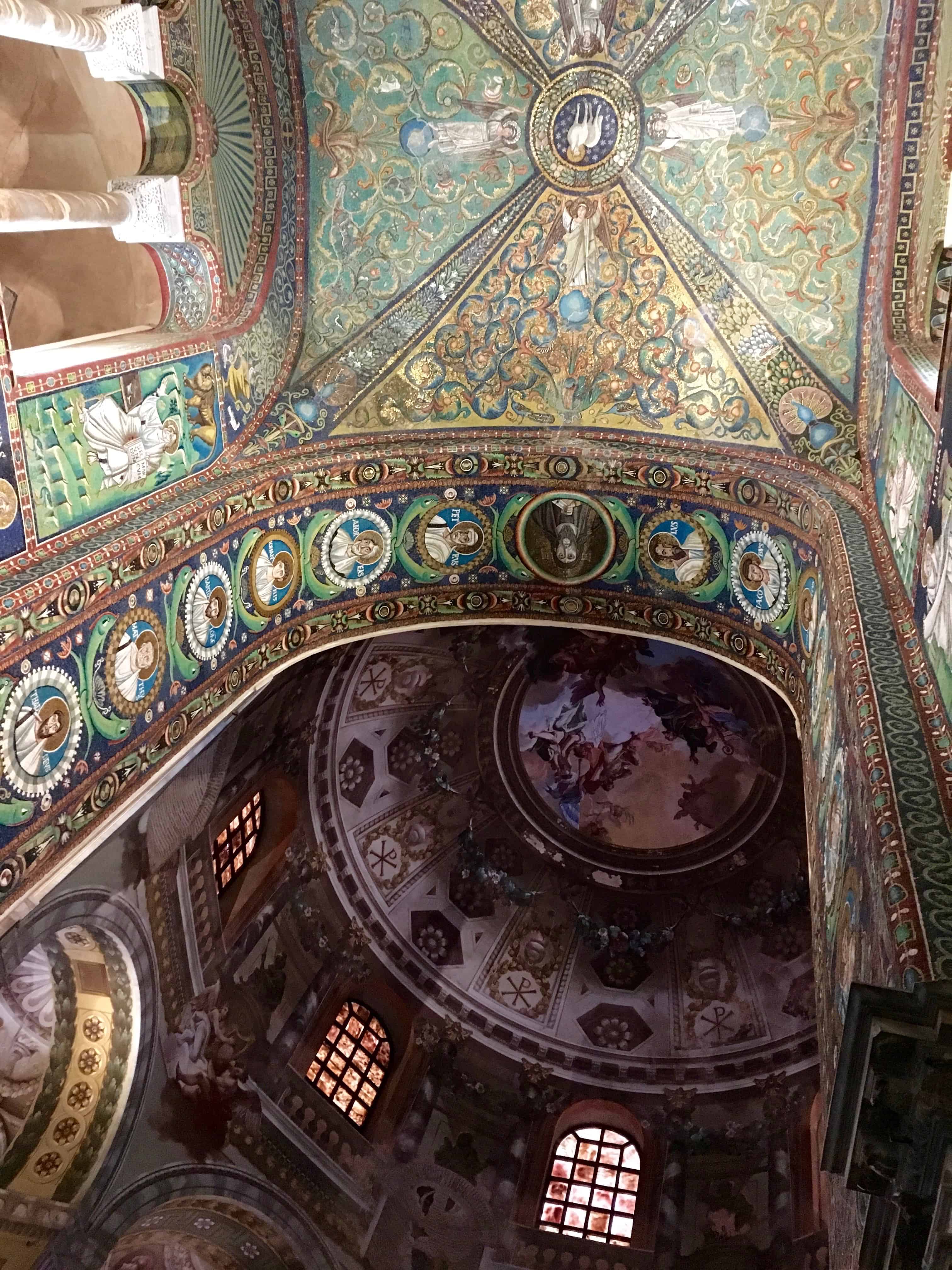
On reflection, we’d agree. But it’s definitely a risk is worth taking. We’d even go so far as to suggest that the Basilica di San Vitale (above) be saved till last, along with the tiny Mausoleo di Galla Placidia (below), which is in the same complex. While every site in Ravenna has its own World Heritage-worthy allure, the absolute wonder inspired by these two sites in particular makes for a suitably breathtaking climax to this epic mosaics meander.

As it is, while we start our walk at San Vitale, we wind up visiting the rest of the sites out of order simply to negotiate the tour groups milling between them. If you have time, this is a good tactic, particularly at the smaller sites where it can get cosy.
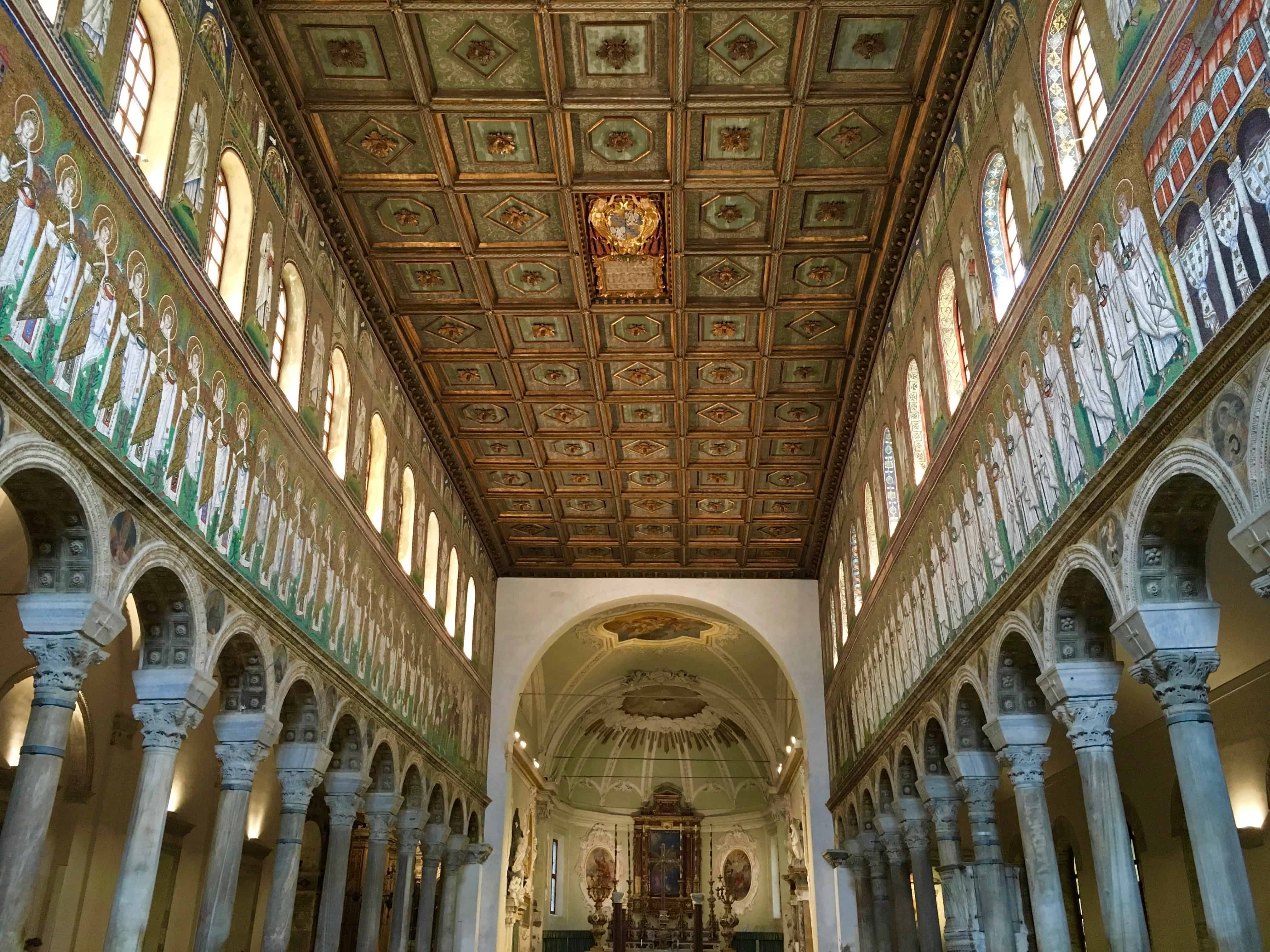
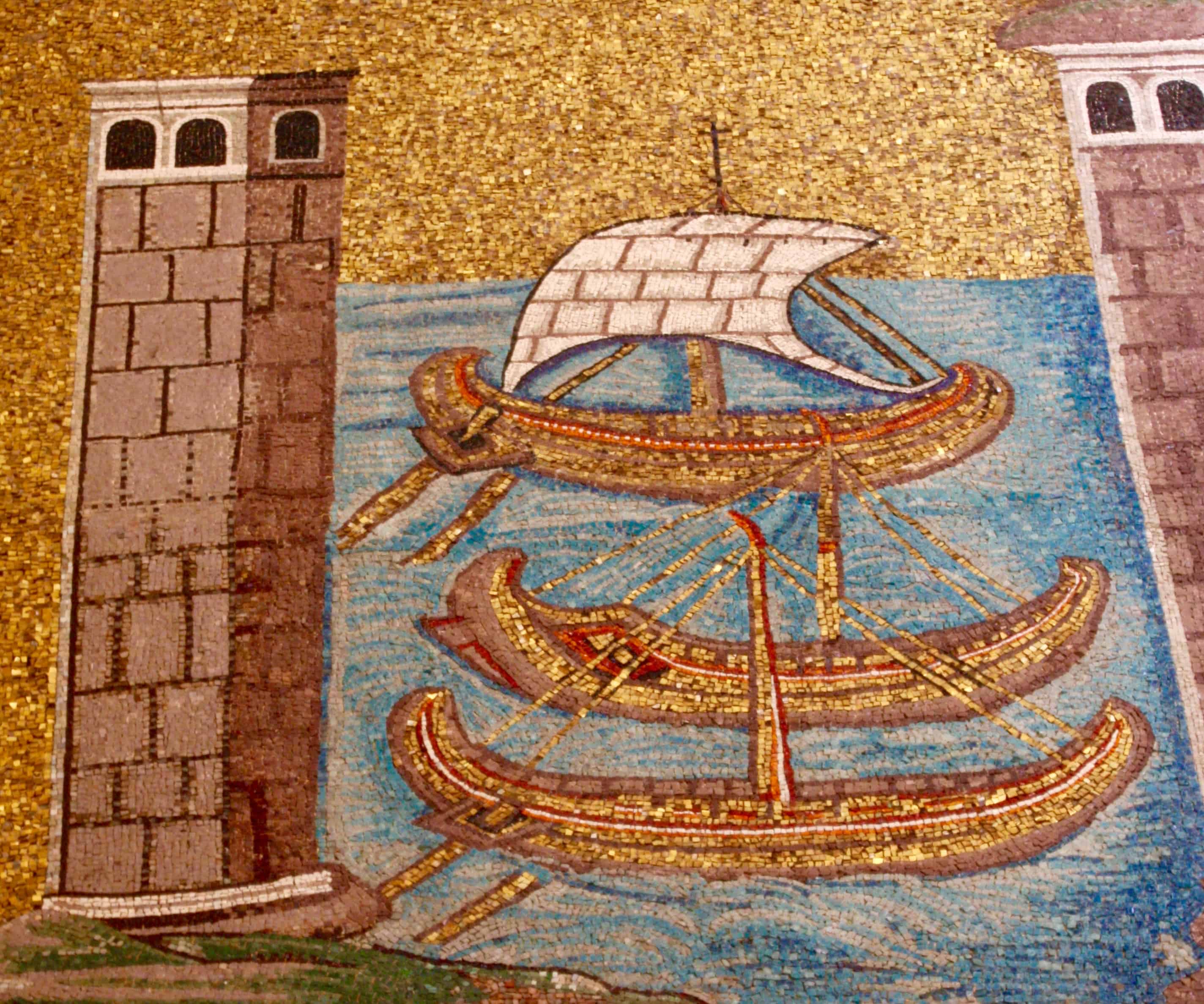

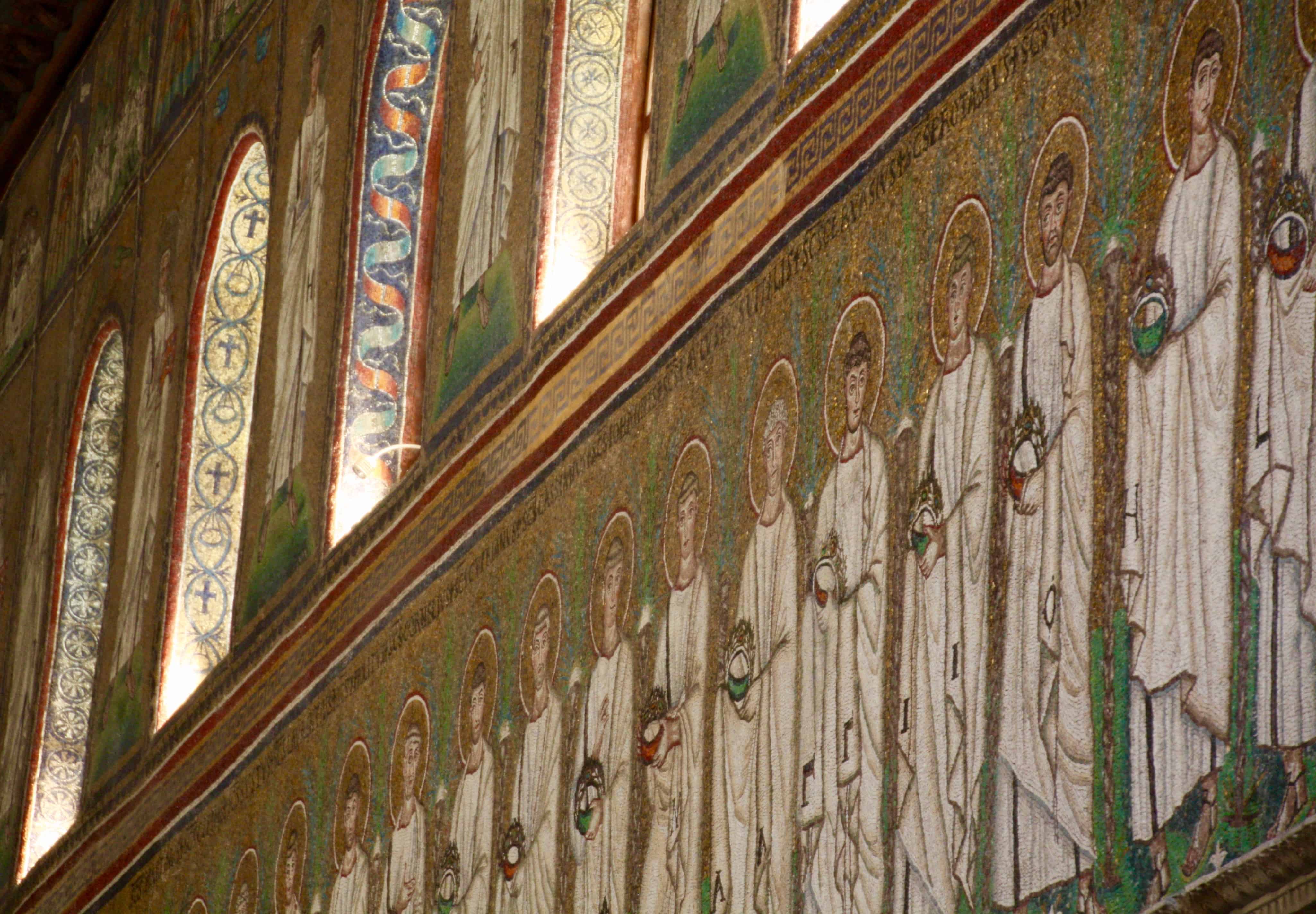
We have the absorbing Basilica di Sant’Apollinare Nuovo practically to ourselves.
Ravenna is a delight to wander anyway; and easy, even if we do loop back on our path several times. It’s possible our third pass by the covered food market isn’t by chance; it’s all we can do not to dribble on the scrumptious-looking meats and cheeses and breads laid out. We’ve already eaten, but at this point, second lunch seems entirely appropriate.
Besides, with all the craning, we need to give our necks a rest.
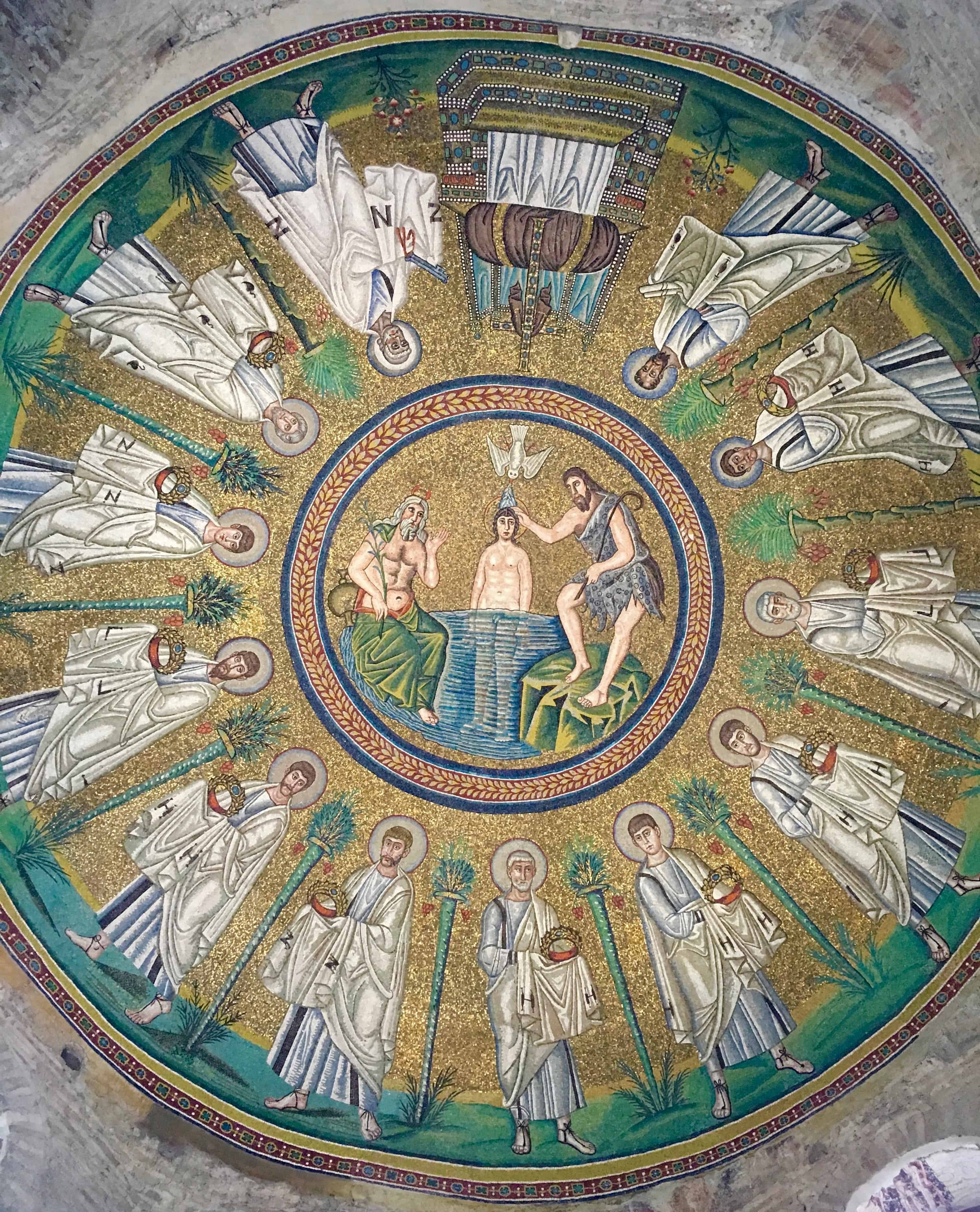
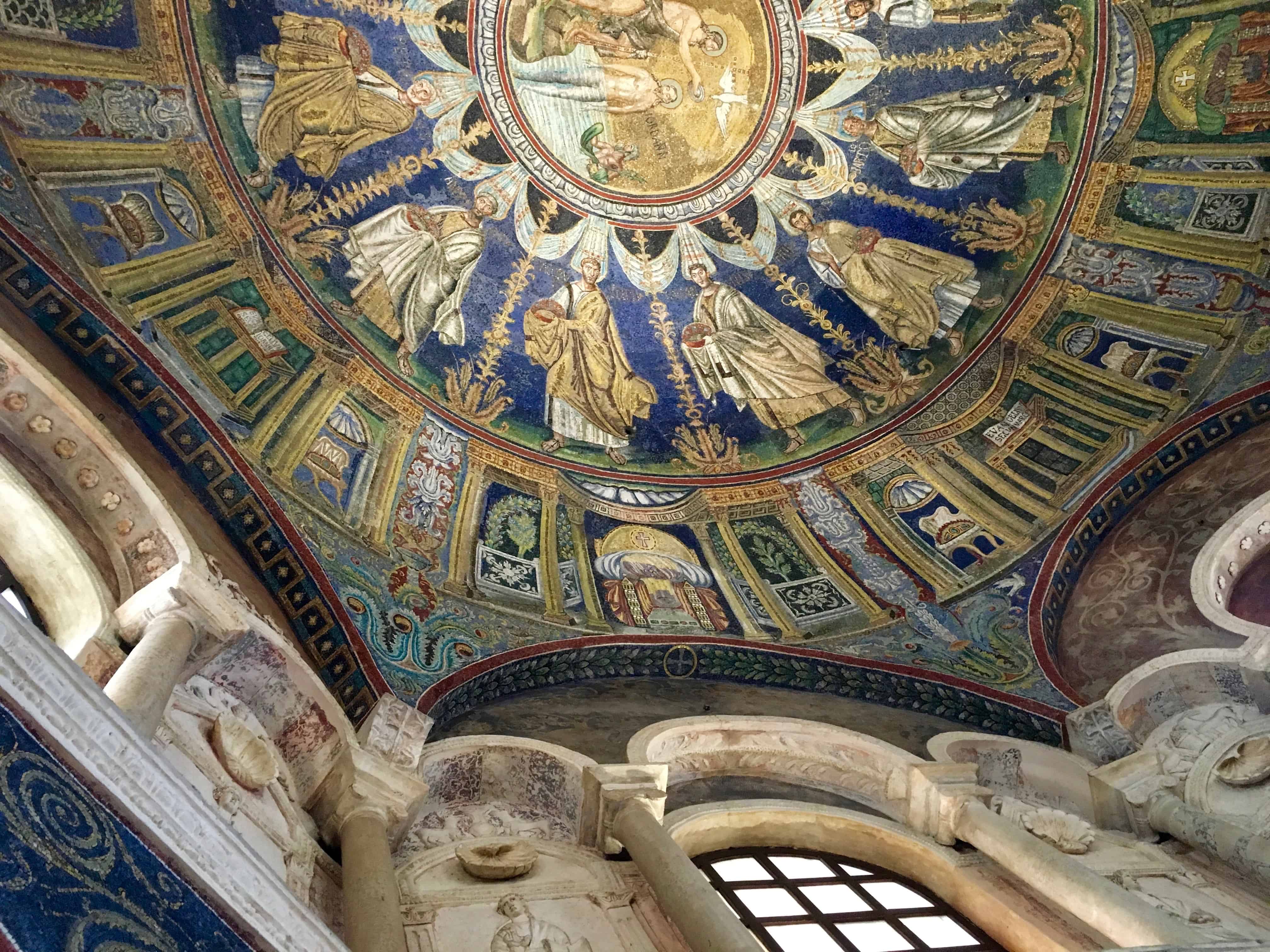
We also make a detour to visit the tomb of Dante Alighieri, who died in Ravenna some years after being expelled from Florence over some questionable politics. With one small doorway, there’s no avoiding the masses down this narrow alley.
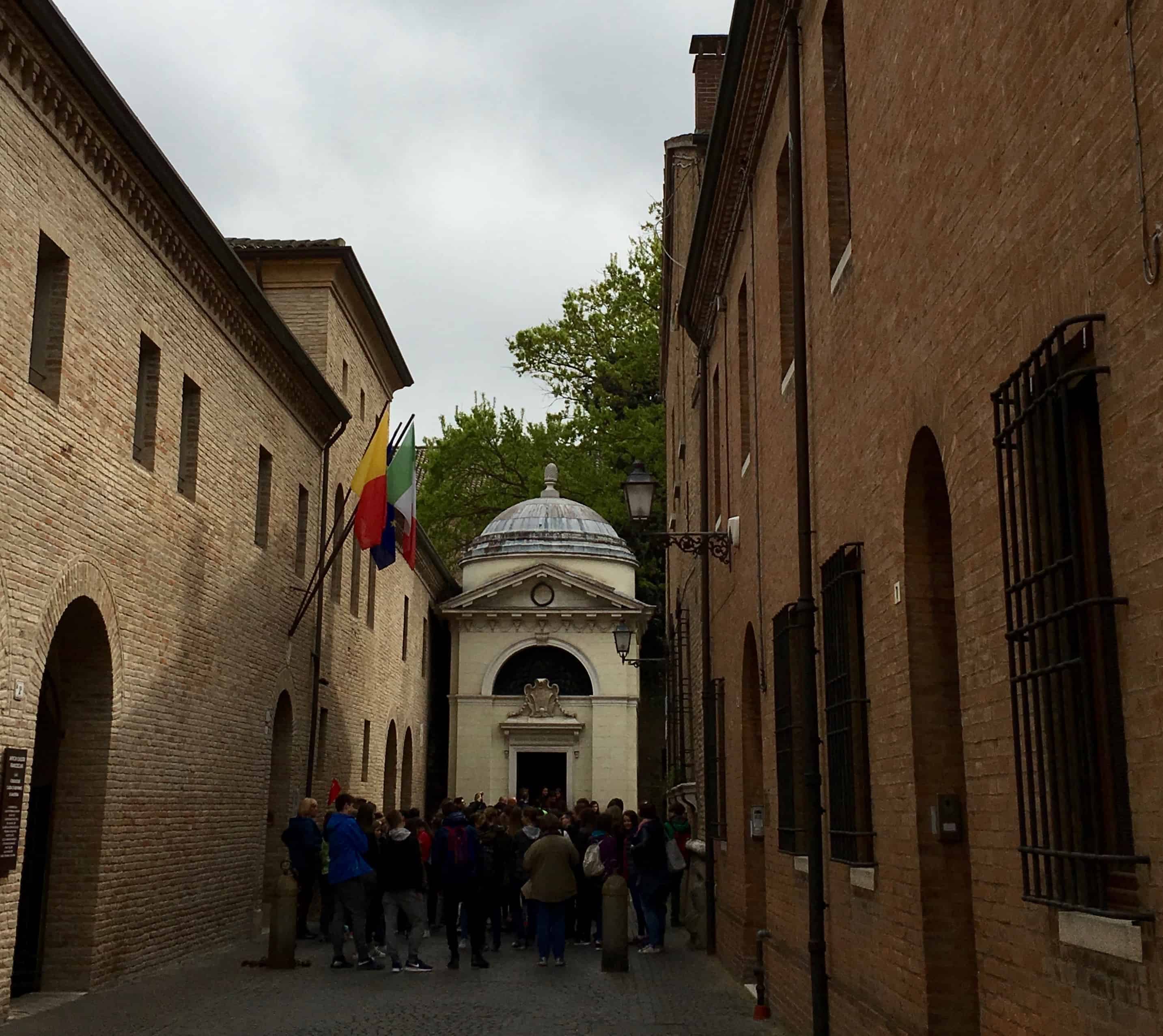
Nearly six hours later, we’re back in the street where we started, this time with a glass of wine to take the edge off the mosaics ‘art-burn’.
As the shops yawn open following their afternoon siesta, we debate whether the pace and peace of Ravenna wouldn’t make it a nicer place to stay than busy, gritty Bologna. Perhaps. But then, we didn’t really know anything about Ravenna before today. And as day-trips go, this one has been a dazzler.

Good to know
Getting to Ravenna
Ravenna is in Italy’s Emilia-Romagna region, close to the Adriatic coast. By car: The town is a little over an hour’s drive from Bologna, just off the A14 autostrada. There are carparks scattered around the edge of the historic centre; we parked in a lot just north of the Basilica di San Vitale for €3 all day. Keep an eye out for the ‘zona traffico limitato’ signs – these mark off the historic centre of town and you can be fined for driving within the zone. By train: Ravenna’s train station is serviced by main lines from Bologna and Rimini.
Tips for visiting Ravenna
There’s a combo ticket for €9.50 (€11.50 between March and mid-June), covering five of Ravenna’s World Heritage monuments, all of them within the historic centre – the Basilica si San Vitale, Mausoleo di Galla Placidia, Battistero Neoniano, Museo Arcivescovile, and Basilica di Sant’Apollinare Nuovo. The combo ticket can be purchased at any of the sites. The Battistero degli Ariani is free. Another two sites are located just outside of town and require separate tickets.
Like many Italian towns, most of Ravenna’s shops close between 12.30pm-4pm. Some cafes and restaurants stay open but if you’re hoping to shop, use the afternoon hours to visit the mosaics and museums, which are generally open all day.
If you have a question or comment about visiting Ravenna, let us know below. For more Italy itineraries and experiences, visit our Italy page.

Hi there you have some fantastic blogs here
Hi Zona, thanks for your feedback!